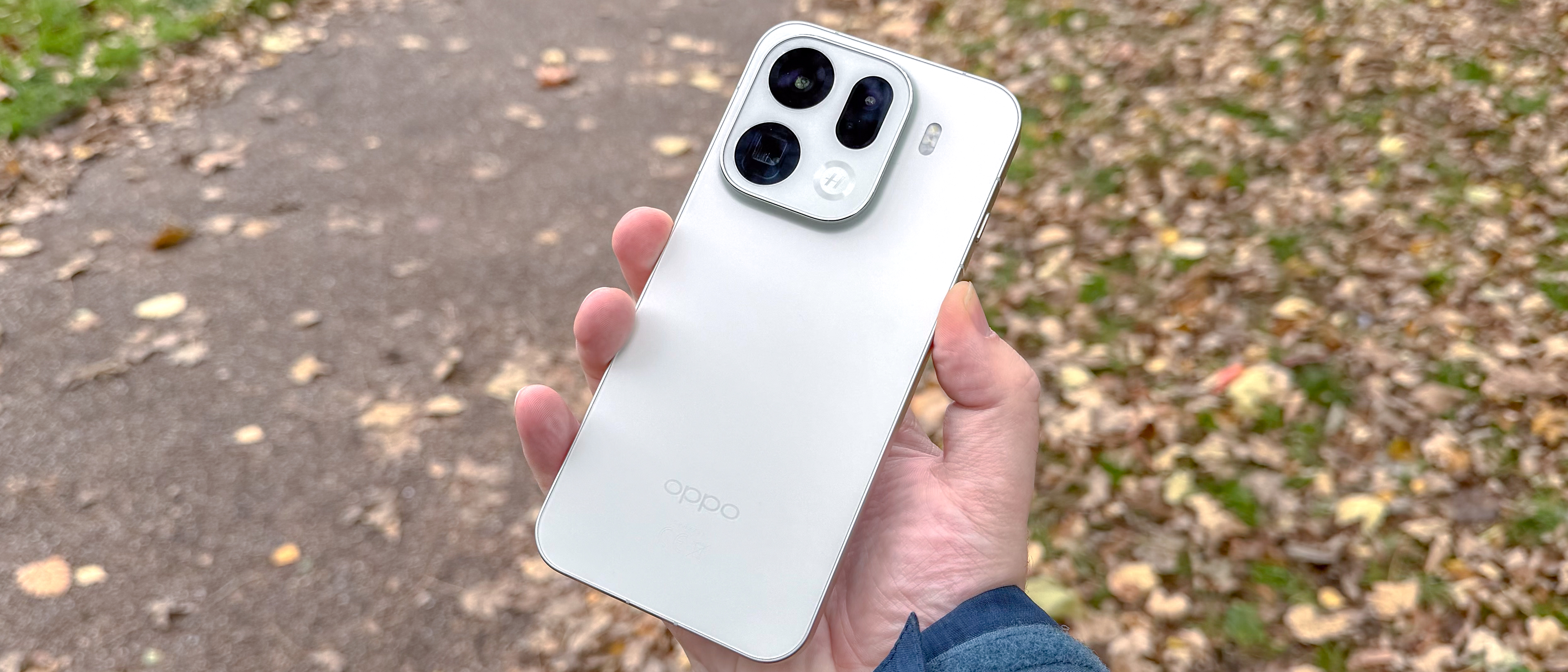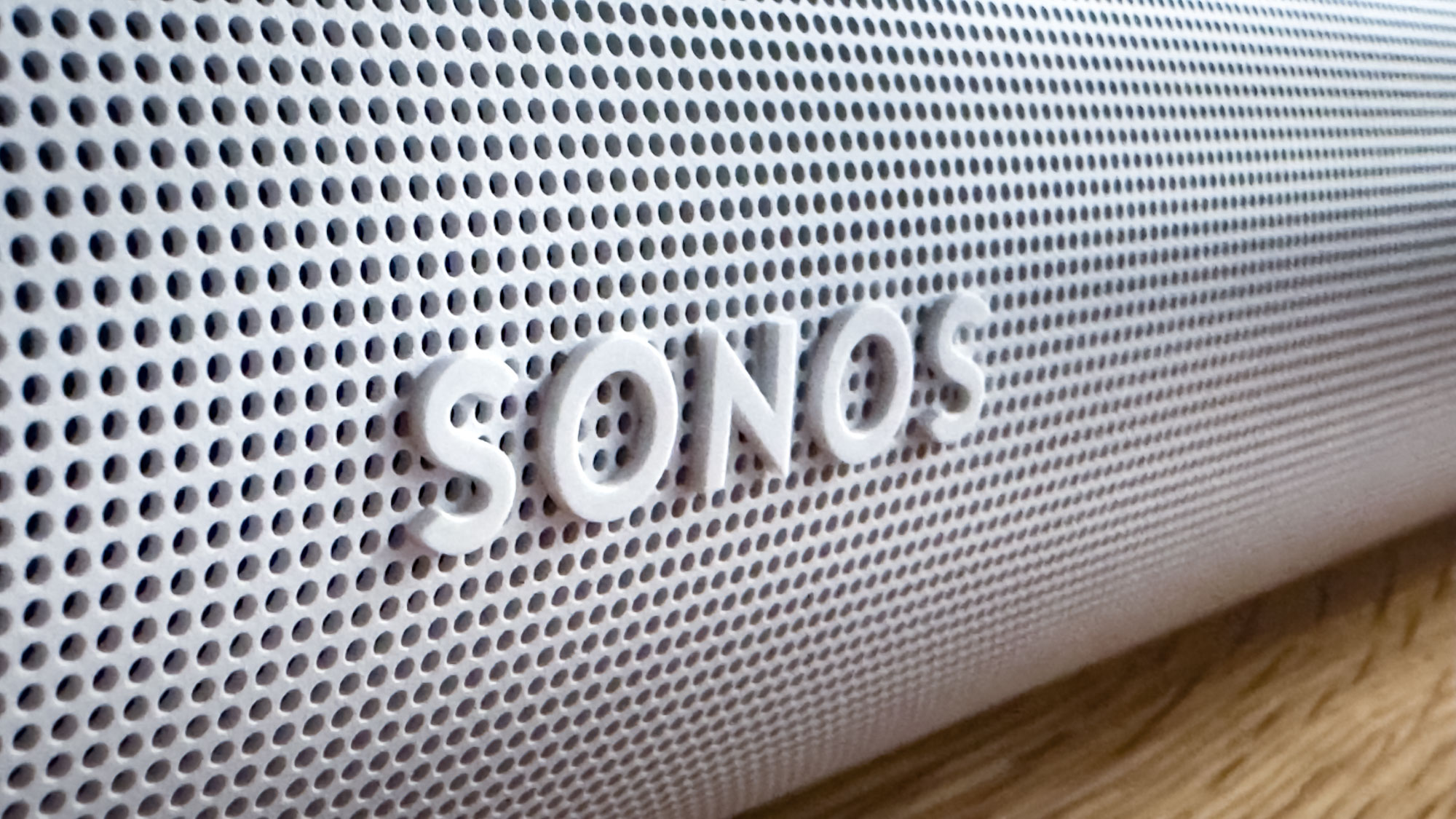Tom's Guide Verdict
Come for the enormous, long-lasting battery and wild camera specs with the Oppo Find X9 Pro, but stay for the aggressive price and high-performing Dimensity silicon. But as impressive as the Find X9 Pro is in some areas, it's off-limits for U.S. shoppers and offers very little in the way the on-device AI found on Samsung and Google flagships.
Pros
- +
Unprecedented battery life
- +
Versatile photography
- +
Top-level performance
- +
Good price
Cons
- -
No U.S. availability
- -
Limited unique AI and software features
Why you can trust Tom's Guide
We didn't need to have any more excellent Android phones launch in 2025 — we've had plenty already. But I'm still glad that Oppo has brought out the Find X9 Pro, as it shows that even this year's best phones have some flaws that they don't need to have.
The headline-grabbing parts of the Find X9 Pro's kit are hard to ignore. A battery that's larger than anything its rivals offer by some margin and a 200MP telephoto camera will do that. And don’t forget the optional teleconverter kit to give that sensor even more reach.
But this isn't a phone for only the hardcore. Long battery life benefits anyone, and a strong chipset and a below-average price for all this hardware means it could be a great choice for anyone who's feeling unimpressed by the latest Galaxy or Pixel models. The only people who should be looking elsewhere are American buyers who won't have easy access to this phone in a store or the AI obsessed who desire more built into their phone.
It's been a thrill testing the Find X9 Pro for this review. And I can't wait to share just how good a handset this is with you.
Oppo Find X9 Pro review: Specs
Starting price | £1,099 |
Display | 6.78-inch AMOLED |
Refresh rate | 120Hz adaptive |
Rear cameras | 50MP main, 50MP ultrawide, 200MP 3x telephoto |
Front camera | 50MP selfie |
Chipset | Dimensity 9500 |
RAM | 16GB |
Storage | 512GB |
Battery | 7,500 mAh |
Charging | 80W wired, 50W wireless |
Operating system | Android 16 with ColorOS 16 |
Water/dust resistance | IP65, IP68, IP69 |
Size | 6.35 x 3.01 x 0.32 inches (161.26 x 76.46 x 8.25 mm) |
Weight | 7.9 ounces (224 grams) |
Colors | Silk White, Titanium Charcoal |
Oppo Find X9 Pro review: Price and availability
On sale from October 28, the Find X9 Pro will cost £1,099 for its lone model. There's no official U.S. availability, but the determined can always find a way around that.
Oppo's really putting the screws to its competition with that pricing. For the same money, you could have an iPhone 17 Pro, a much smaller phone with all the limitations that this brings. If you wanted an alternate but equivalent Android phone, you could pay £1,249 for the Galaxy S25 Ultra, or £1,199 for a Pixel 10 Pro XL, two phones that the Find X9 Pro is definitely on par with.
Oppo Find X9 Pro review: Design
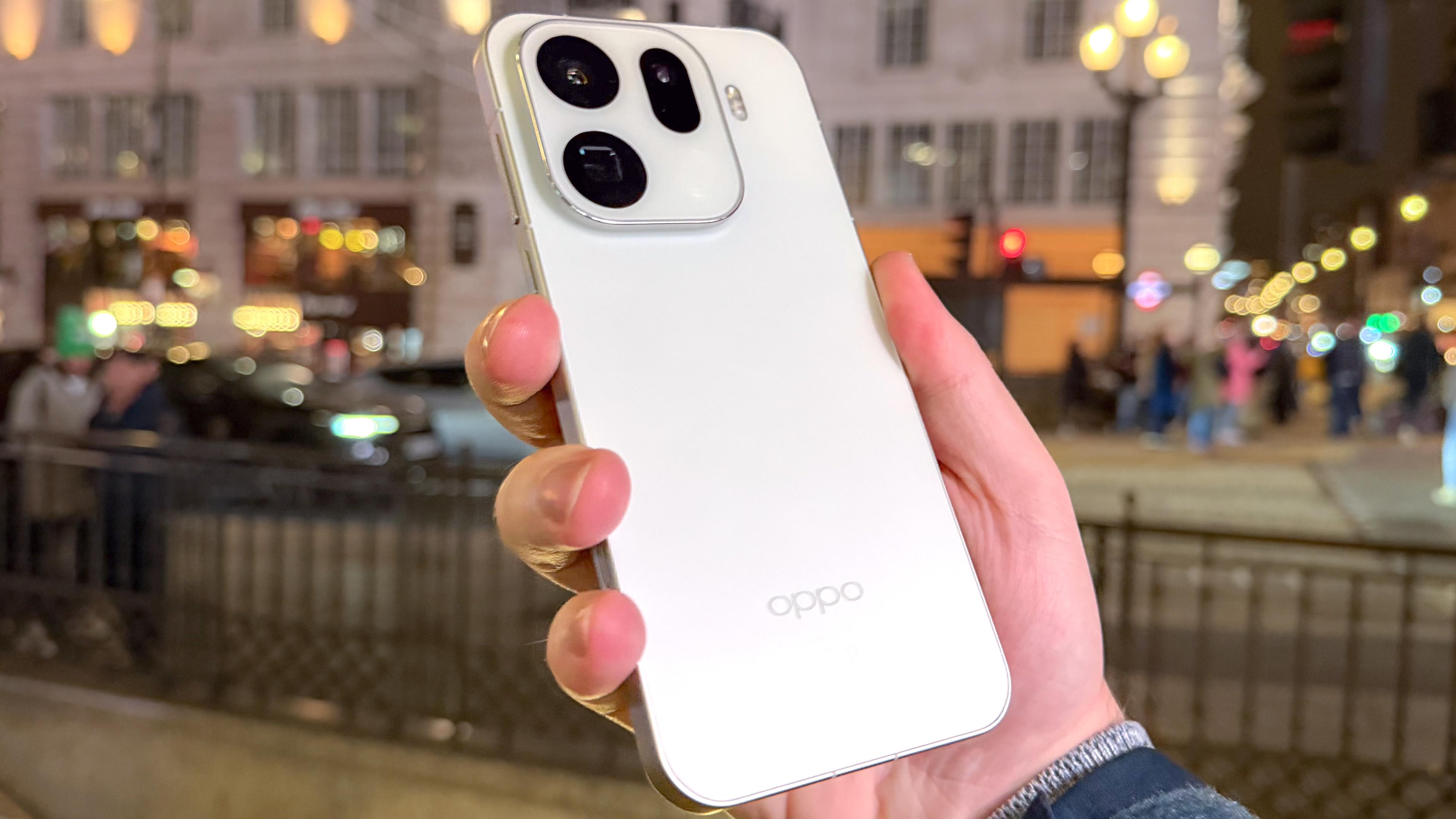
Oppo has thrown out the rounded shapes of previous Find X devices in favor of a flat-edged phone with a square camera block design. It fits right in with other recent smartphones, although with Apple having moved from a square camera block to a rectangular one spanning the whole phone, the Find X9 Pro amusingly looks more unique despite matching Apple's older designs.
Get instant access to breaking news, the hottest reviews, great deals and helpful tips.
Around the sides, along with the expected volume and power keys and USB-C port, you'll find two strangely familiar buttons. One is the Snap Key, which by default is used to take screencaps or audio recordings for Oppo's AI Mind Space app, though you can also set it to perform various other shortcut options.
In addition to9 the Snap Key, you'll find the Quick Button, a Camera app shortcut as well as shutter button and in-app zoom adjuster via swiping left or right.
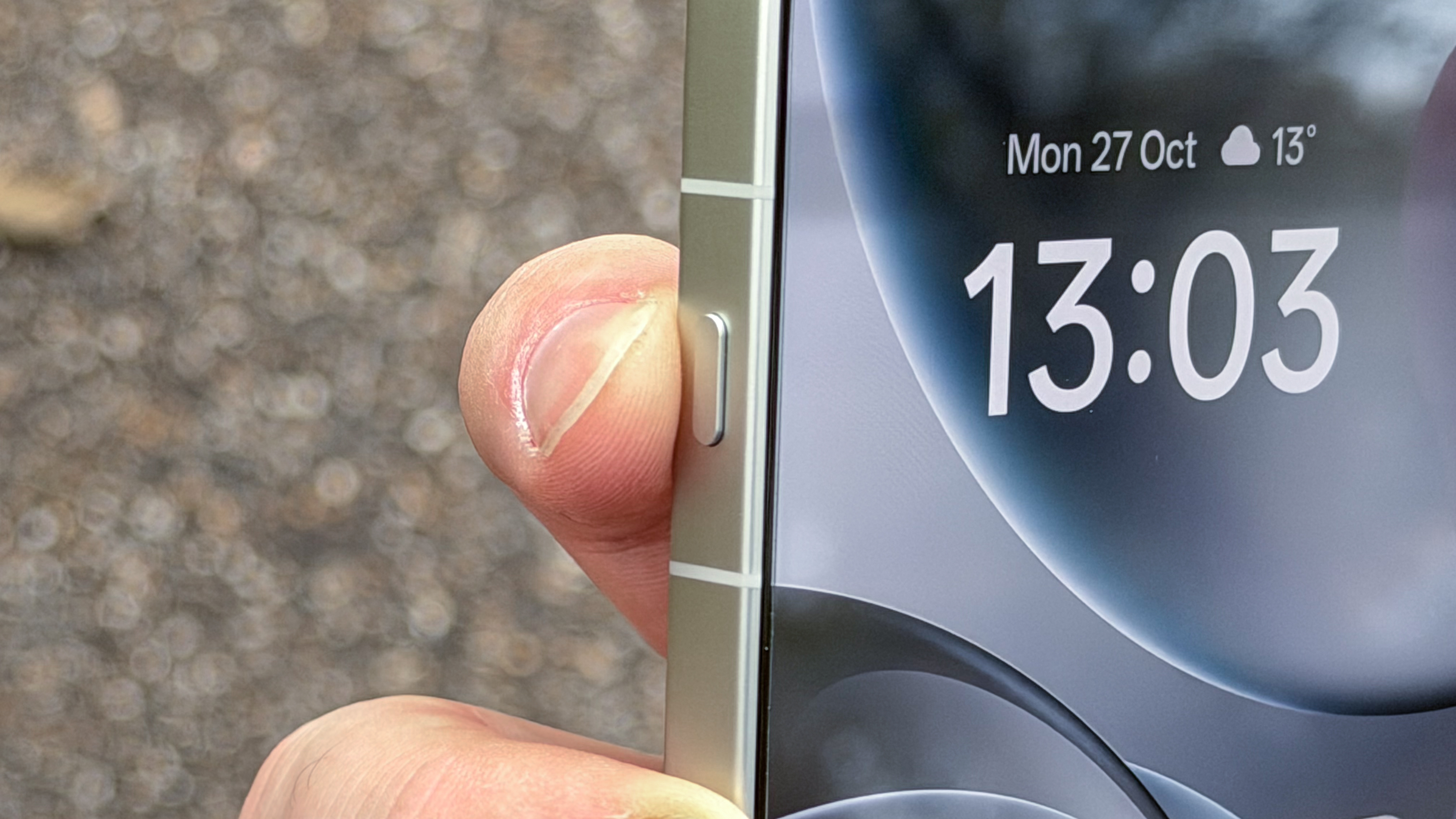
The fruity inspiration of these two buttons is not hard to see. But having both on an Android phone is certainly novel, if not useful. It's the kind of smartphone design convergence that I can get behind.
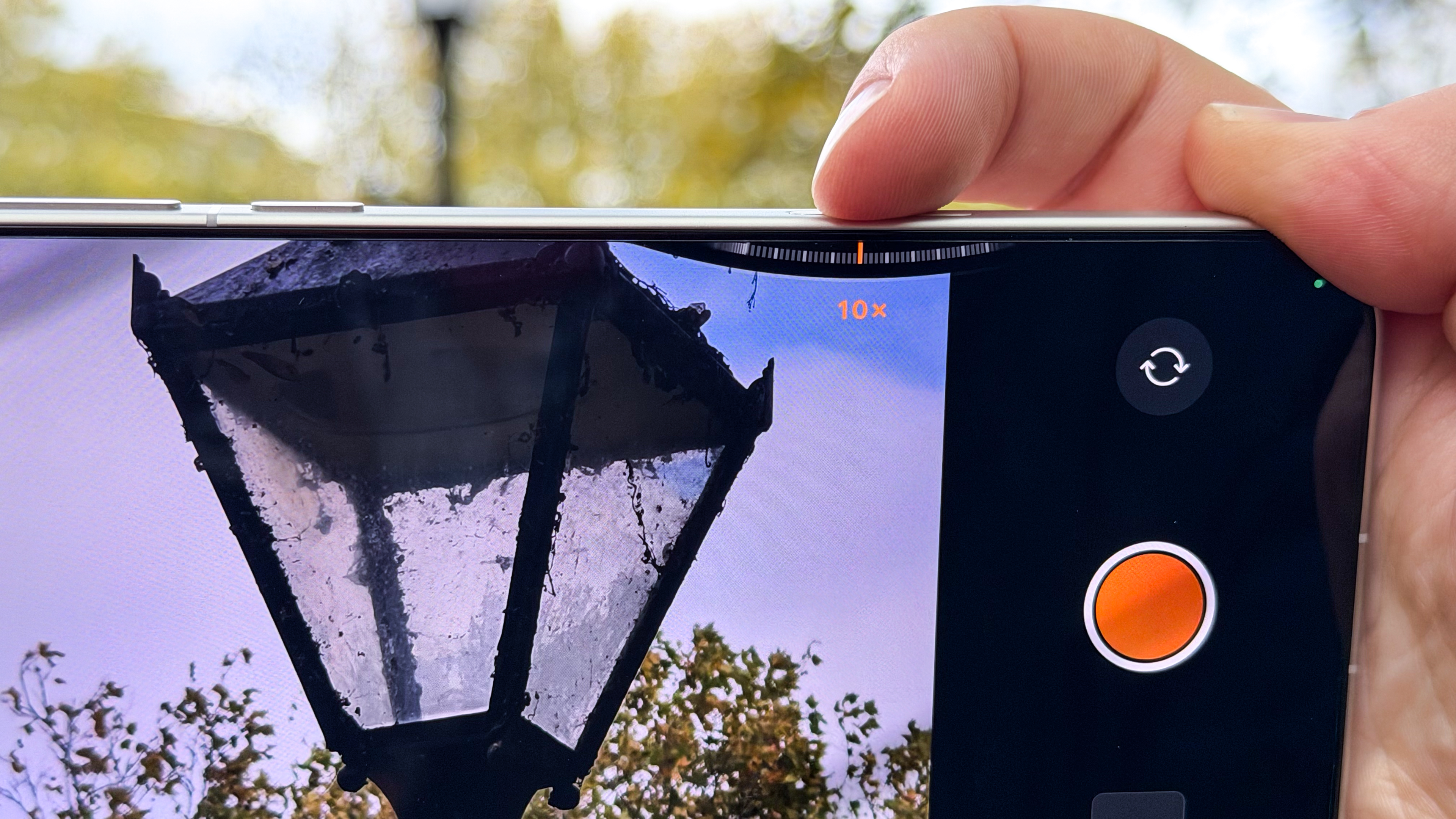
Alongside the usual toughened glass, Oppo is touting the Find X9 Pro's triple water resistance ratings of IP66, IP68 and IP69. These ratings should ensure the phone remains intact in cases of immersion in water and when the phone is struck by either hot or cold water jets.
The last thing to mention here is the Find X9 Pro's colors. You only have two simple shades to pick from —Silk White (the color of my review unit) and Titanium Charcoal. Both are made of aluminum, despite the latter colorway’s name; they look stylish if a little plain. I would have loved even one token bright color to lend the phone additional personality.
Oppo Find X9 Pro review: Display
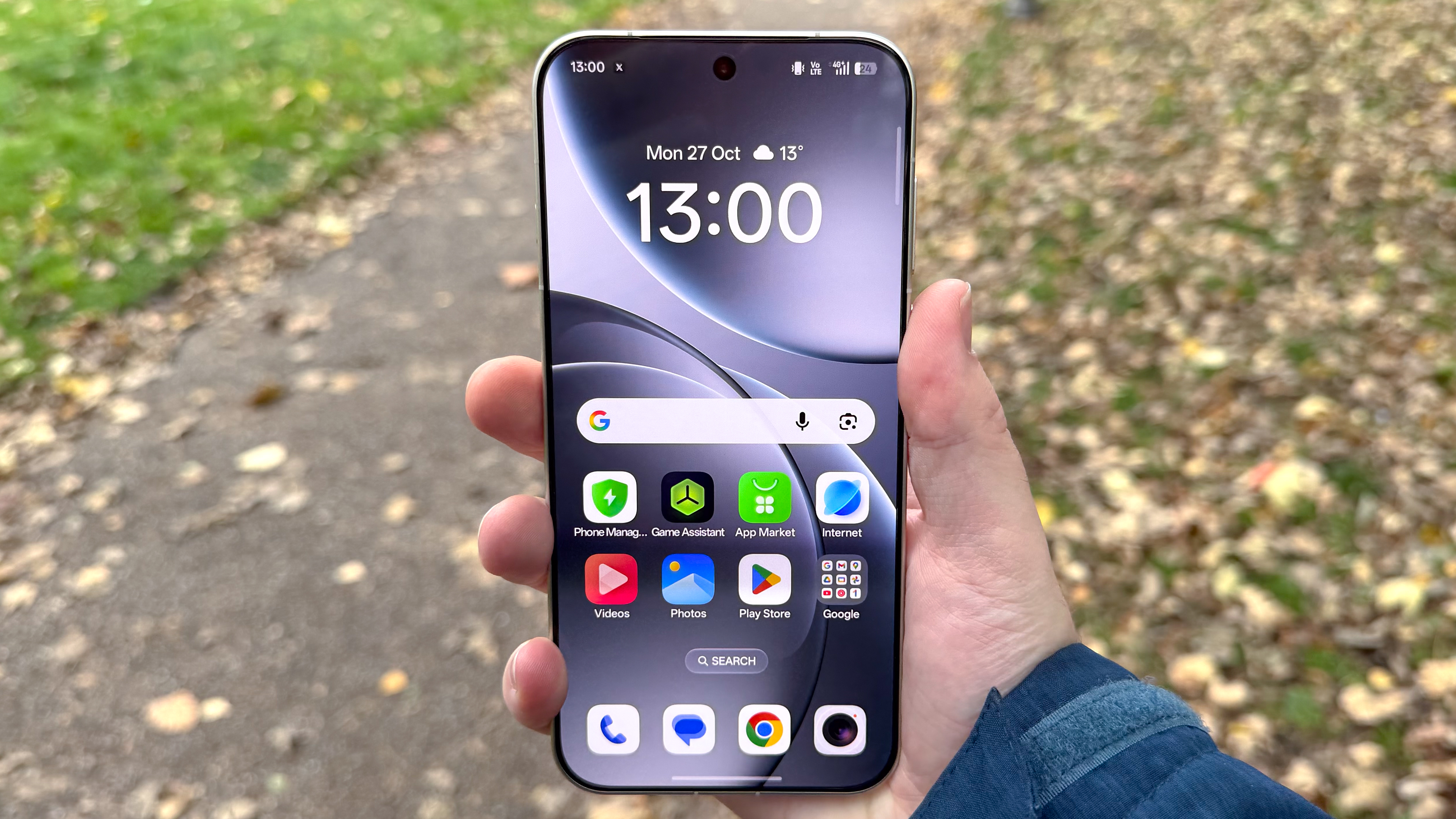
The 6.78-inch OLED screen on the Find X9 Pro comes with a 1 - 120Hz adaptive refresh rate that fits right in with its rivals. Oppo rates the Find X9 Pro's display as having a 3,600 nits peak brightness, which is reasonably bright.
In fact, the Find XP Pro looks brighter than the Galaxy S25 Ultra, at least to my eye, though it can't match the supercharged display of the Google Pixel 10 Pro XL. But Oppo also mentions the Find X9 Pro's 1-nit minimal brightness, for more comfortable use in the dark.
I am not sure this is something to be encouraged — many people have enough trouble putting their phones down at night as is, let alone if they can make their phones even easier to use in a darkened room. But, if your willpower holds out, it's good to have that flexibility available. Hopefully, the Find X9 Pro's speedy 2160Hz PWM dimming rate reduces headaches for those who are sensitive to screen flicker.
Hiding beneath the panel is a 3D ultrasonic fingerprint scanner, the gold standard for fingerprint unlocking thanks to their reliability and speed even when the screen above is dirty or scratched. Oppo continues to treat its display for easier use with wet or oily hands, too, which is handy if you're using your phone outdoors or while you're doing the dishes.
Oppo Find X9 Pro review: Cameras
Oppo furnishes users with a whole lot of megapixels with the Find X9 Pro's cameras. The loadout consists of a 50MP main camera, 50MP ultrawide camera and 200MP telephoto camera with 3x optical zoom, along with a 50MP selfie camera up front. There's also a True Color Camera on the back to capture color temperature across the scene and apparently make your images reproduction more accurate.
Images shot with these sensors are processed with a pipeline developed along with camera maker Hasselblad, as well as Oppo's own LUMO Image Engine.
Now let's bring on the samples, beginning with the Find X9 Pro, the iPhone 17 Pro Max and a display of chocolates. The Oppo's image is a touch brighter, which helps make the various colors of the hearts and cups look more appetizing. Even the wooden table looks more inviting thanks to warmer tones.
The iPhone's image is not bad by any means, and seems to have more of the shot in focus than what the Find X9 Pro managed.
Heading to Picadilly Circus at night, and with the Galaxy S25 Ultra in hand, I was impressed at how dark the Find X9 Pro's shot can be while still staring at the bright advertising boards that the square is known for. The Galaxy S25 Ultra's image is much more typical, with the light bleeding into the darkness and making everything a little fuzzy-looking.
Back with the iPhone as our comparison device, this ultrawide shot of an unusually empty Charing Cross station offers more proof of how good the Oppo is at making bright but detailed shots. Even in a well-lit public space, the iPhone 17 Pro Max yields a dimmer image.
Looking up at this church spire, with the Oppo's 3x telephoto camera, the Find X9 shows the brickwork off in brighter colors without sacrificing detail. The iPhone is shooting at 4x here, meaning that it should be at a detail advantage here, but it's not noticeable.
At 6x(or 8x in the iPhone's case), brightness takes a dive for the Oppo, while it increases in the iPhone shot. There's more detail in the Find X9 Pro's shot when you look at the walls of the spire closely, but it's hard to say it's a better result than the iPhone's.
Going back to 3x, but with the Galaxy S25 Ultra this time, we have the opening set of Hadestown. The stage has a lot of highlights and shadows, and the Find X9 Pro keeps everything in check nicely.
While the S25 Ultra does well in the darker areas, it doesn't have the range to then bring out the full brightness of the areas where the stage lights are shining.
I used the Pixel 10 Pro XL for this selfie portrait comparison with the Find X9 Pro. I'm not sure I like the way the shape of my face looks through the lens of the Oppo, but I do like its colors, even compared to the Pixel, a phone whose selfies I generally find attractive and lively-looking.
We should also mention the teleconverter accessory that Oppo offers alongside the Find X9 Pro.
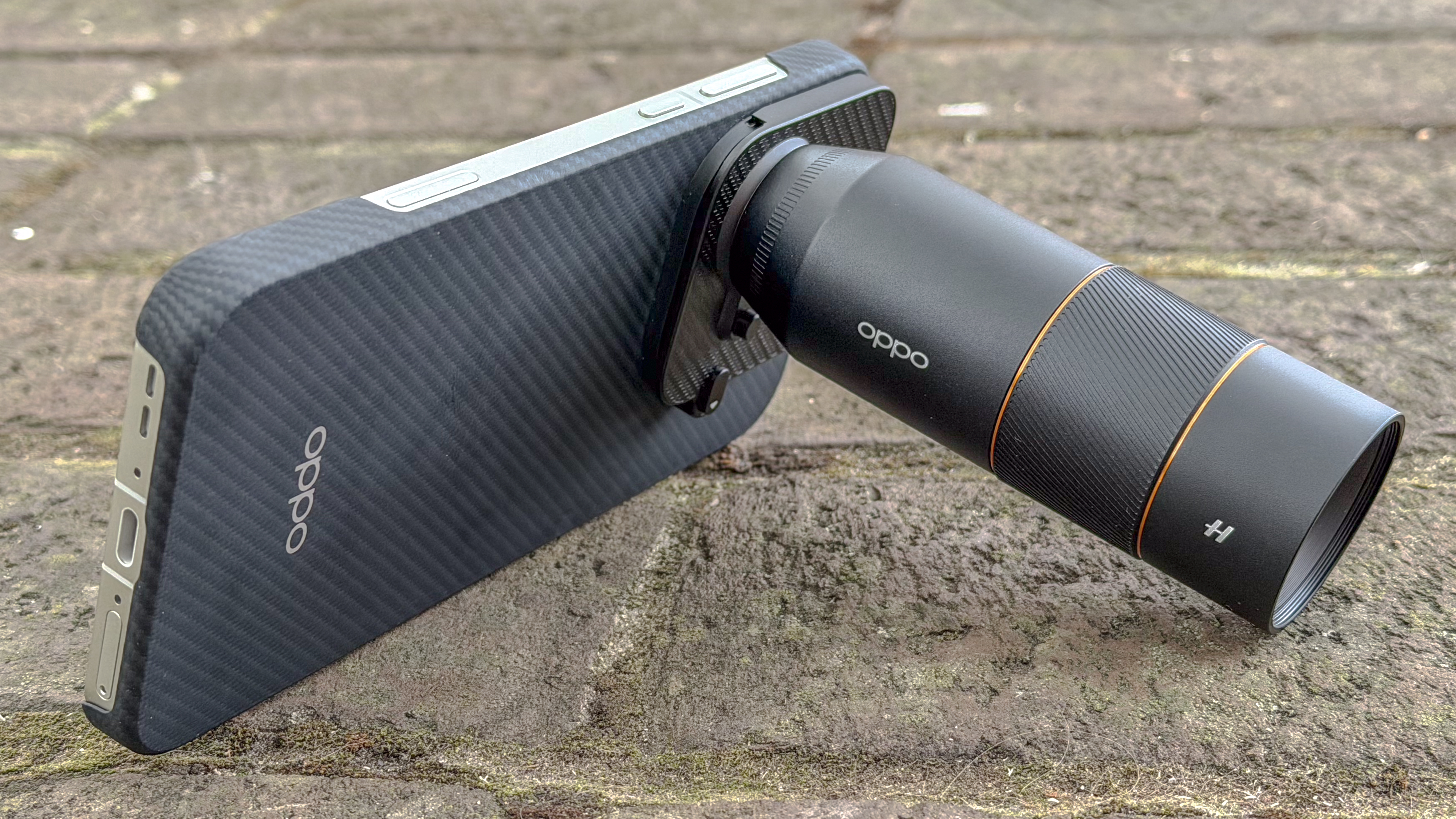
Availability and pricing info isn't clear yet, but this accessory clips to the back of a specific case (included in the box) and lets you get 10x optical quality images using the Find X9 Pro's telephoto camera.
The teleconverter makes the Find X9 Pro a lot less pocket-friendly, and renders all the other rear cameras unusable when attached, but it is effective, as these photos demonstrate.
Oppo Find X9 Pro review: Performance
Oppo strays from the usual Android flagship path by using a Dimensity 9500 chip in its Find X9 series, not the more typical Snapdragon 8 series silicon you'd see in phones from Samsung to OnePlus. Fortunately for Oppo, the latest Dimensity flagship SoC is a mighty one.
| Row 0 - Cell 0 | Oppo Find X9 Pro | Samsung Galaxy S25 Ultra | Google Pixel 10 Pro XL | iPhone 17 Pro Max |
Chipset | Dimensity 9500 | Snapdragon 8 Elite for Galaxy | Tensor G5 | A19 Pro |
Geekbench 6 score (single-core / multi-core) | 3,143 / 9,166 | 3,031 / 9,829 | 2,322 / 6,286 | 3,871 / 9,968 |
3DMark Wild Life Extreme Unlimited (score / fps) | 6,854 / 41.04 | 5912 / 35.40 | 3,462 / 20.73 | 5855 / 35.03 |
Adobe Premiere Rush time to transcode (mins:secs) | 0:53 | 0:52 | 2:19 | 0:22 |
The Find X9 Pro is noticeably ahead on graphics benchmarks, such as the 3DMark test we see above. It's also got a reasonable single-core Geekbench score, reflecting strong single-app performance, although the overall multi-core score puts it behind the latest iPhone and Galaxy phones.
Even though it's using unusual silicon, I didn't see the Find X9 Pro struggle to run any apps when I used the phone. Playing Destiny Rising was just as fun and smooth as on other phones, even after prolonged use.
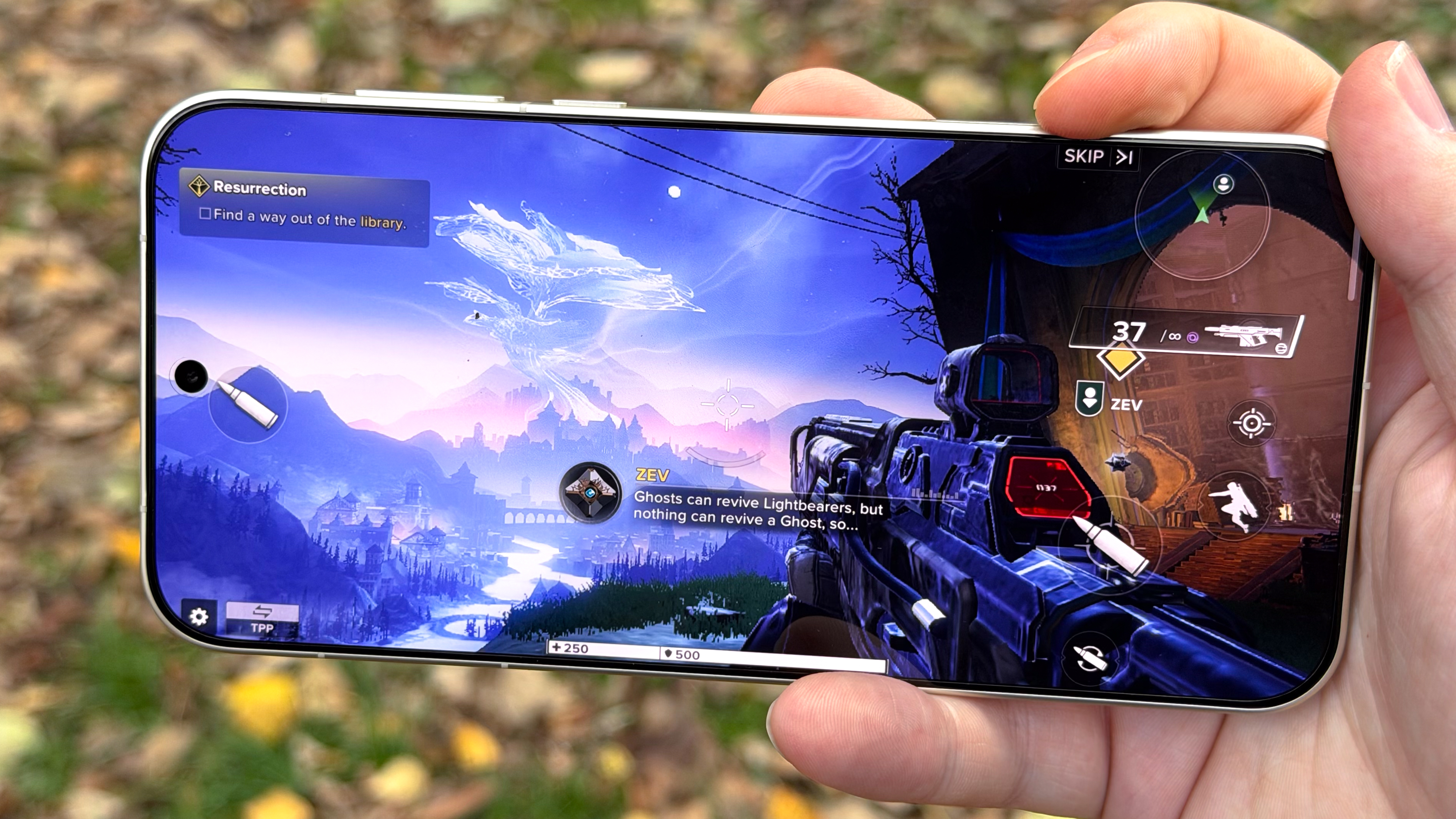
Oppo is making picking storage and RAM on the Find X9 Pro easy since there's only one available spec of 16GB RAM and 512GB storage. That's on the generous side for the price, but I always feel that users deserve at least two choices, especially a lower capacity one that helps keep the price of a phone down further. Alas, the lack of a 256GB edition of the X9 Pro is a double-edged sword.
Oppo Find X9 Pro review: Battery and charging
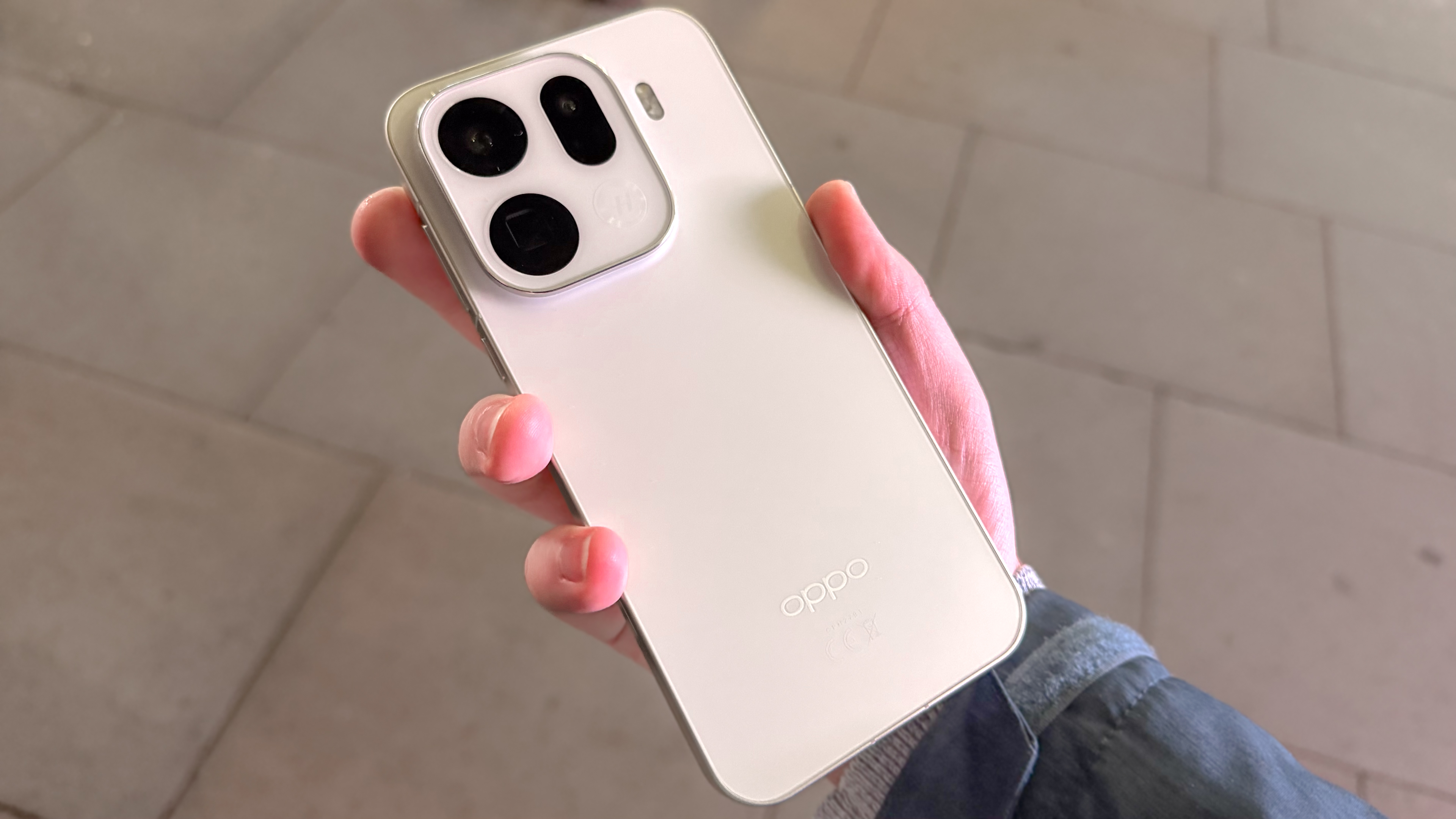
It’s fitting that I’m reviewing the Find X9 Pro around Halloween. Like a relentless axe-wielding maniac in a slasher movie, this phone just won’t die.
There's a 7,500 mAh silicon-carbon battery inside the phone, which is 50% larger than the typical flagship Android phone battery. And while every battery slowly decays, OnePlus is apparently guaranteeing 80% of the capacity to remain after five years.
But it's the longevity enabled by this battery that really shines. In my usual battery test — three hours of 1080p YouTube playback at 50% brightness — the Find X9's battery dropped just 10%. This is the best result I've ever seen on this test, and if we ever get the chance to put the Find X9 Pro through our official TG lab testing, I'm sure it would be giving the best phone battery life leaders including the ROG Phone 9 Pro and the OnePlus 13 a run for their money.
Filling this large battery back up is no easy task, but Oppo offers users 80W wired and 50W wireless charging (plus 10W reverse wireless charging for donating power). Sadly you don't get the necessary plug in the box for these maximum speeds, but Oppo offers a compromise. With a USB Power Delivery (PD)-compatible charger of sufficient power, you can charge the phone at up to 55W.
Oppo Find X9 Pro review: Software and special features
The latest ColorOS update, featuring Android 16, comes with a new Flux Home Screen design, that makes the Find X9 navigate a little more like other iOS-influenced Android skins. That includes a new Dynamic Island equivalent for keeping track of ongoing tasks, but also the more unique ability to resize folders and app icons more freely.
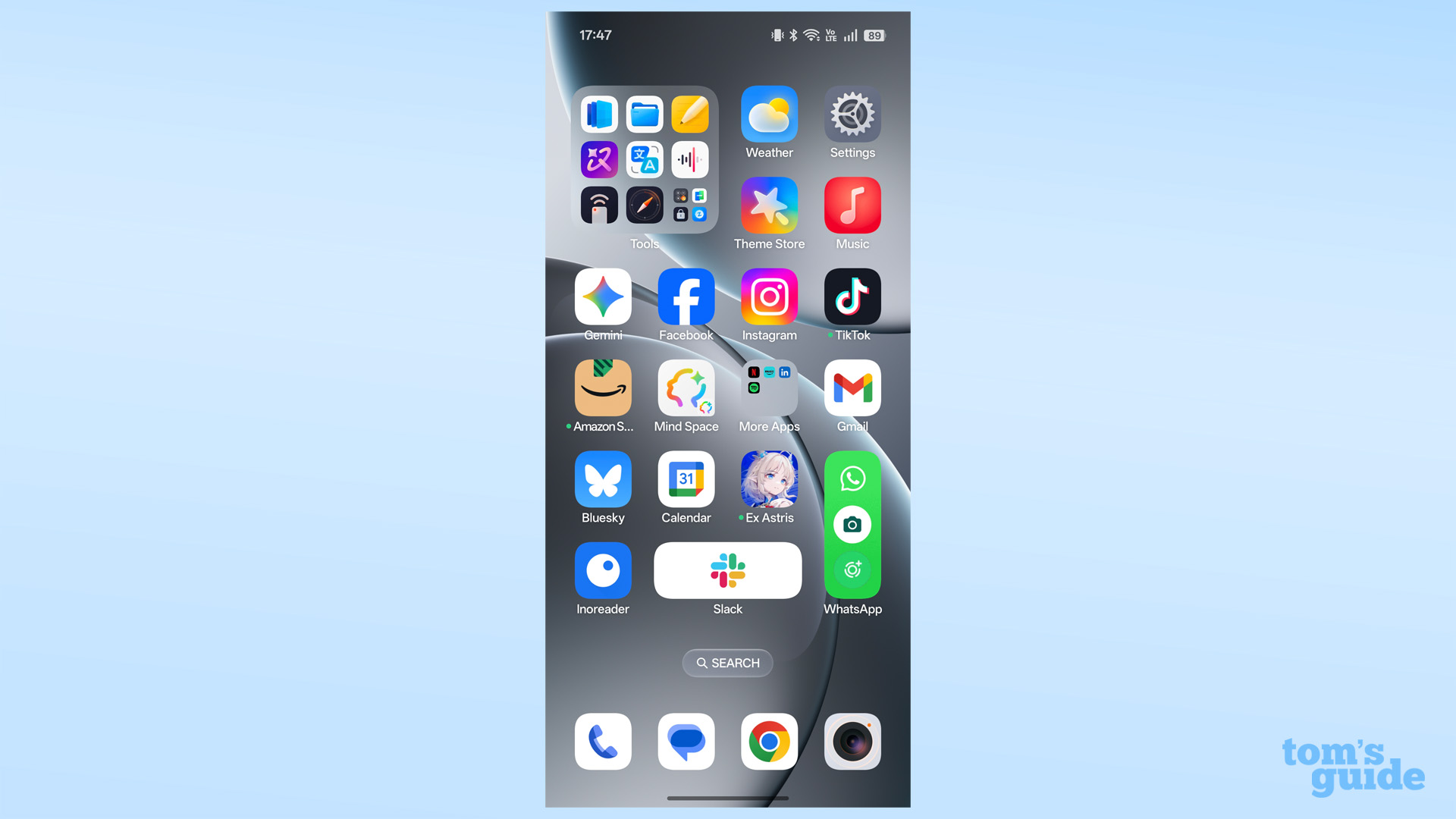
You can set them to take up a 2x2 slot on your home screen grid, or a 1x2 vertical or horizontal bar if you prefer that look or density to your main interface. It helps fill out the space or fit more into less, depending on how you like things.
Along with the default Google Gemini powers, the Find X9 Pro's central AI feature is its AI Mind Space. With a tap of the Snap Key or a three-finger swiping gesture on-screen, you can capture special screenshots that are squirreled away in the Mind Space app, where they are then cataloged for you to arrange or ask chatbot questions about as you see fit. (In that sense, it's a lot like the Pixel Screenshots feature on Google's flagship phones.) You can make audio recordings too if that's how you like to make notes for yourself.
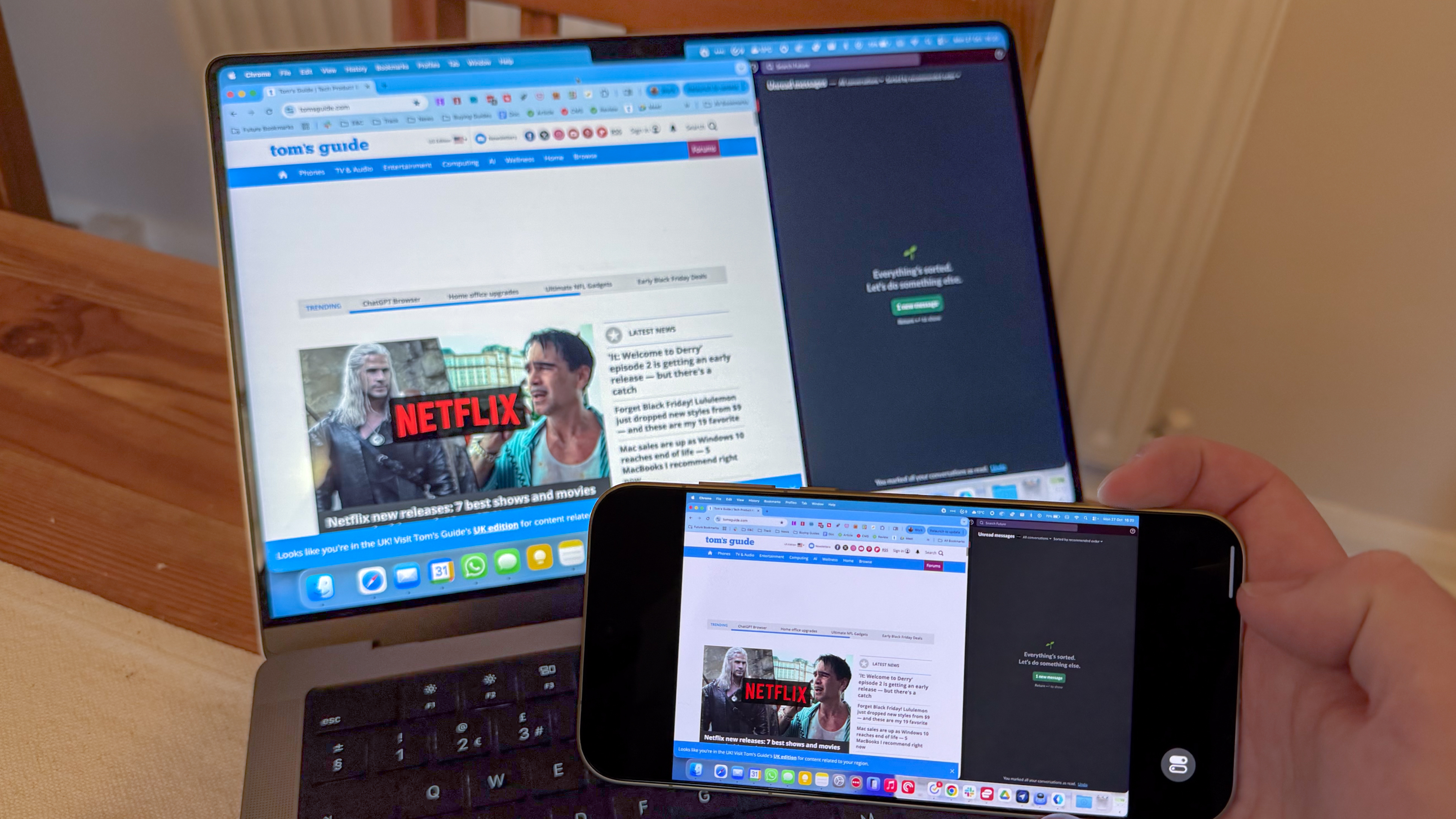
Oppo phones already offered file sharing and remote control abilities with the O+ Connect app, available on both Windows PCs and Macs. But as well as controlling your Apple desktop from your Android phone, this suite of tools now allows you to open up to five phone app windows on your Mac/Windows laptop from your X9 via Bluetooth. It really takes iPhone Mirroring to another level, letting you use even more of your phone as part of a full desktop setup.
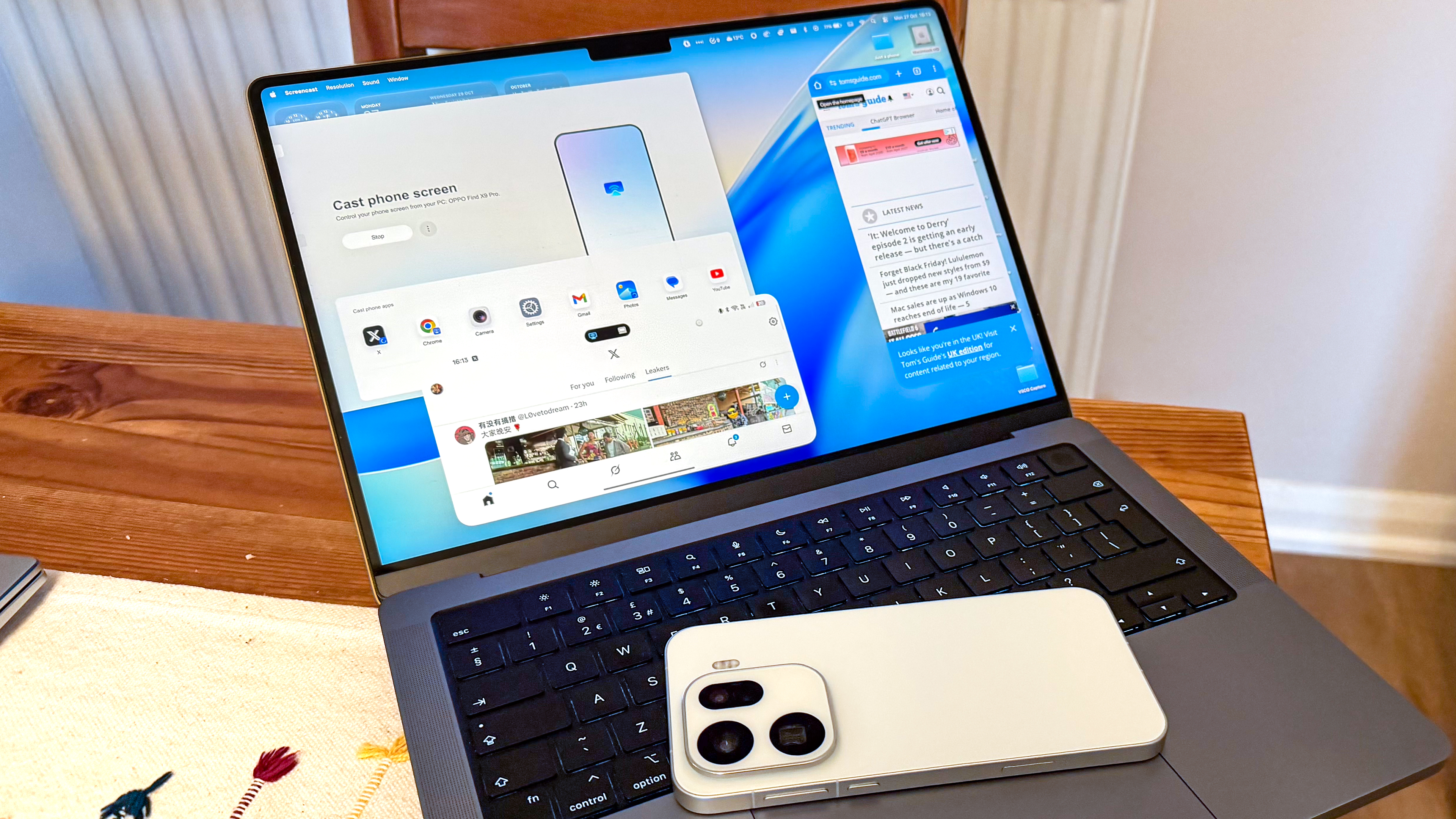
We're not done with the Find X9 Pro messing with Apple gear. Currently unavailable, but on the way, is the ability to pair an Apple Watch with the Find X9 Pro via Apple Watch Connect.
Yes, you read that correctly — you'll be able to use an Apple-made smartwatch with this Android-powered Oppo device. Doing so requires you to jump through some hoops, including performing initial set-up of the watch with an iPhone, but you can apparently use all the regular features via Oppo's own app. Once this is available to use, I'll report back with a thorough account.
Oppo Find X9 Pro review: Verdict
As 2025 comes to an end, Oppo has put in a show-stealing performance with the Find X9 Pro, upstaging solid phones like the Galaxy S25 Ultra and Pixel 10 Pro XL — and even the iPhone 17 Pro Max to an extent. The Find X9 Pro shows up weaknesses in all these phones, but we still can't ignore how hard this is to buy for many TG readers.
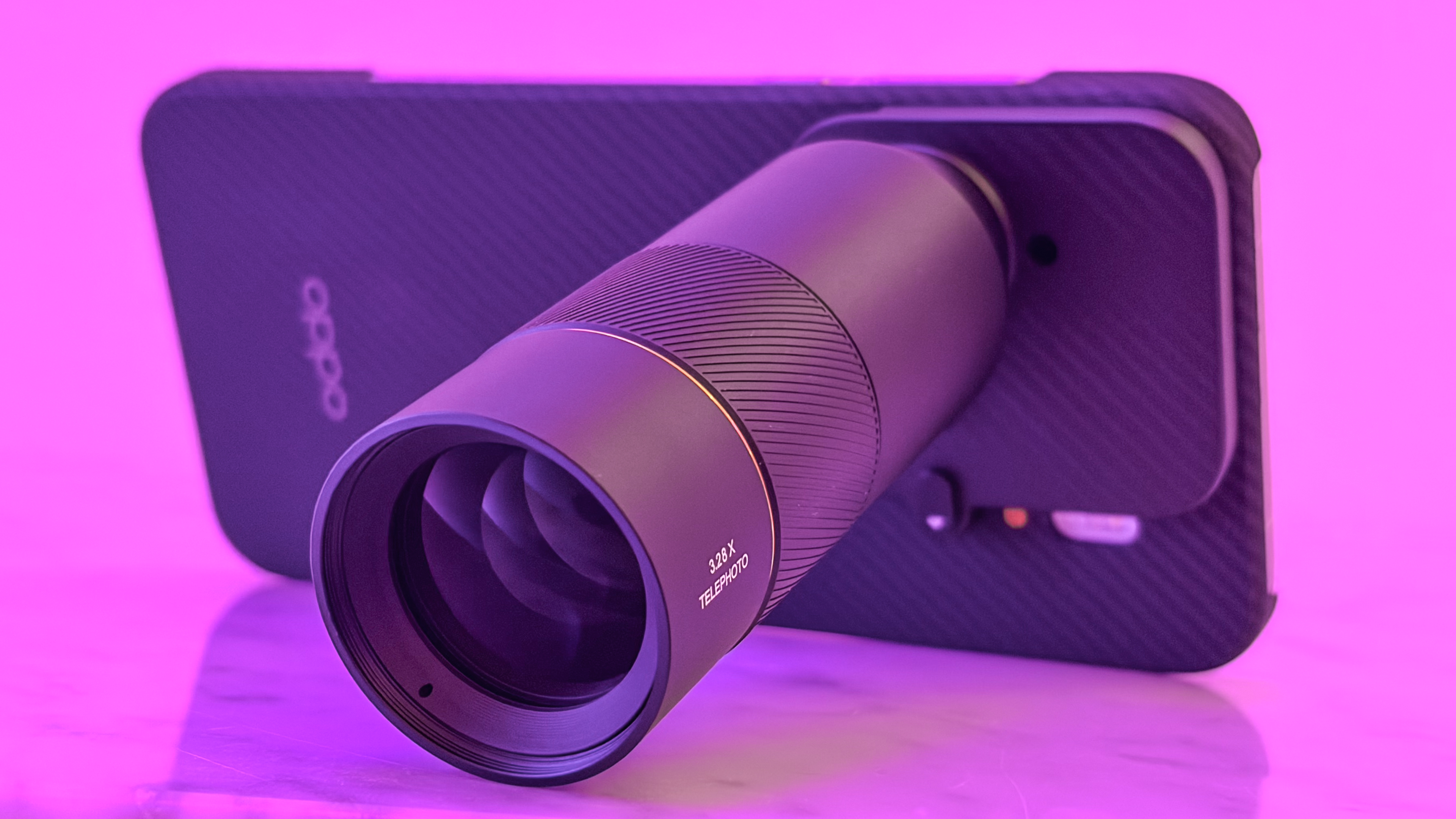
If you do happen to live in an area where Oppo sells its products, this is absolutely a phone to go for if you love big battery life on your premium smartphones. That's even more so if you're a photography fan, since it's on a level with the best from Samsung, Google and Apple, and can do even more than those phones if you want to buy the teleconverter kit.
While other phones are trying to refine their existing hardware as much as possible without making big changes, Oppo has taken huge swings that have paid off. The Oppo Find X9 Pro goes right on the list of "Phones I wish my American friends and colleagues could easily buy," and stands as a prime example of how smartphones still have room to grow. The Find X9 Pro is a 2026 phone that happens to have arrived just a little early.

Richard is based in London, covering news, reviews and how-tos for phones, tablets, gaming, and whatever else people need advice on. Following on from his MA in Magazine Journalism at the University of Sheffield, he's also written for WIRED U.K., The Register and Creative Bloq. When not at work, he's likely thinking about how to brew the perfect cup of specialty coffee.
You must confirm your public display name before commenting
Please logout and then login again, you will then be prompted to enter your display name.
